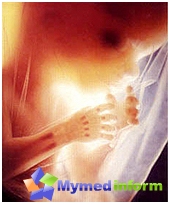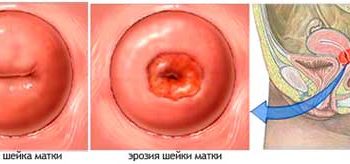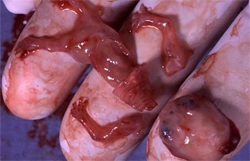Abortion is not always the choice of a woman. Causes of it can be medical - severe internal organs, nervous system, oncological lesions. However, in any case, the abortion can affect the health of the woman and its opportunities to become a mother in the future.
Content
Medical abortion is the removal of a fetal egg with the simultaneous scraping of the walls of the uterus. Medical abortion is performed on pregnancy time up to 12 weeks. Optimal for its abortion period - 6-7 weeks. Abortion is carried out by a doctor in the hospital.
To penetrate the uterus, its channel is expanded by special expansion. To remove the fetal eggs of the uterus, scrape the tool - Curet. Medical abortion is carried out under anesthesia. A few hours after an abortion, a woman is under the supervision of a doctor. With a favorable course of the postoperative period, the patient is discharged on the same day.
Despite the seeming simplicity, the medical abortion is one of the most complex gynecology of operations. Inflammatory diseases, the exhaustion of the functional layer of the uterus can lead to infertility, and if pregnancy has come, then severe complications are possible.
Danger number 1. Threat of interrupting subsequent pregnancy
In the course of an abortion, such a complication as a cervical injury is likely, as a result of which elderly cervical failure occurs - the state at which the cervix does not perform its holding function. If in the norm of the cervix during the whole pregnancy, it remains closed, which is necessary to hold the fetal egg in the uterine cavity, then in exhausco cervical failure, this function is broken.
The cervix is a muscular education that may be damaged during an abortion by a surgical instrument. At the same time, a hole is formed, it leads to the fact that the cervix becomes functionally defective. More often this complication occurs when the first pregnancy ends with an abortion, since the cervical channel in these cases is very narrow and poorly led by expanding surgical instruments.
Eastic-cervical insufficiency manifests itself by interruption of pregnancy, more often in 16-18 weeks. At the same time there are bloody seals from the sex tract, there are insignificant grabs-like pain at the bottom of the abdomen, but it does not happen more often. Then the fruit egg comes out of the uterus, there is a miscarriage.
This complication can be prevented, in advance knowing the inferiority of the cervix. For this, the cervix applies seams that hold it in a closed state. The trouble lies in the fact that the Eastic Cervical Insufficiency is often diagnosed when the miscarriage has already happened and adequate treatment is possible only during subsequent pregnancies. If the doctor has information about the presence of the injury of the cervix during the previous abortion, then he will spend the inspection of cervix in a timely manner, will appoint an ultrasound at the critical period.
Danger number 2. Hormonal changes
The reason for the miscarriage after an abortion may be a change in hormonal regulation. Pregnancy is a state during which the body, all its systems are rebuilt to ensure normal growth and development of the fetus. In case of artificial interruption of pregnancy, the normal operation of endocrine organs - pituitary glands, ovarian, etc. This will lead to the fact that during the next pregnancy, the fruit will not be ensured by the corresponding hormone support. As a rule, this is expressed in a lack of a hormone of a yellow body - progesterone playing a key role to preserve pregnancy in the first trimester. This complication can be eliminated by taking appropriate drugs that the doctor will appoint.
Danger number 3. Improper attachment of the fetal egg
As a result of the abortion, the inner layer of the uterus is injured and thinned - endometrium, the same layer to which the fruit egg is attached. The state of the inner layer plays a huge role for the proper formation of the placenta. In the presence of thinning, sections of chronic inflammation, adhesions (connective tissue, which is formed as a result of inflammation in the uterine cavity) the fruit egg is attached to the place on the wall of the uterus, where these damage is missing. Often, such sites are located in the lower parts of the uterus, which leads to a low location of the placenta, the prelation of the placenta - while the placenta overlaps the output from the cervix.
It is also possible to attach the fetal egg not in the uterus, but in the cervix - the so-called cervical pregnancy. All these states are fraught with the appearance of bleeding associated with the detachment of the placenta, and the cereal pregnancy can generally become a reason for removing the uterus due to massive bleeding; Such pregnancy can not be conveyed to the end, and with the cereal pregnancy, the fruit always remove.
During pregnancy and low attachment of the placenta during pregnancy, it is often necessary to carry out inpatient treatment aimed at preserving pregnancy; Increases the likelihood of root separation by caesarean sections.
 Danger number 4. Future growth delay
Danger number 4. Future growth delay
As already noted, after the preceding abortions, the inner layer of the uterus can become incomplete, defects may arise when forming the placenta, which in turn leads to insufficient flow of oxygen and nutrients to the fetus. This condition is called fetoplacental failure. As a result, the fruit lags behind in growth from the period of pregnancy, the birth of a child with insufficient weight is possible.
In this regard, it is especially important during pregnancy to monitor the growth rates of the fetus. The doctor does it at each reception, measuring the dimensions of the abdomen, as well as during ultrasound research. When diagnosing a fetal growth delay, special treatment is carried out at home or in hospital.
Danger number 5. Tarrow of the uterus
This formidable complication is possible with a significant thinning of the wall of the uterus after a large number of abortions or if the uterus perforation is performed during an abortion - the formation of a pass-through hole. If such a serious complication happened during an abortion, then a woman is surgery, restoring the integrity of the uterus wall, or if the defect is insignificant, observation and treatment is carried out without surgery. In any case, connecting fabric is formed in place of perforation. Unlike the muscular, it is a little stretch, and the uterus can occur during pregnancy or during childbirth, while significantly suffer from both mom and baby. It is clear that pregnant having such a feature requires particularly careful observation.
Danger number 6. Resh conflict
This is called a condition in which a rhesus antibodies to the erythrocytes of the fetus are produced in the body of the woman - red blood cells carrying oxygen. This complication may occur after abortion only in women having blood with a negative rhesus factor, if the fruit was with a positive rear. During abortion, a large number of reserves-positive erythrocytes of the fetus can get into the mother's blood flow, which will cause the formation of a large number of antibodies. The resulting antibodies remain in the body of a woman and can have their indulged effect on the fetus during subsequent pregnancies rezes-positive fruit.
Currently, prevention of reserves-sensitization after abortion and childbirth has been developed. It includes the introduction of a special preparation woman - anti -usus immunoglobulin. This drug destroys the reserves-positive erythrocytes of the fetus, which remained after the abortion in the blood of the mother, is thus produced by maternal antiprifice antibodies. It is desirable that this drug is introduced within 2 hours after an abortion, but permissible postponement to 72 hours.
It should be noted that the antigens of the Rhus system (that is, the reserves-factor actually) is contained in the blood of the fetus from the 7-8th week of pregnancy, that is, the formation of antibodies is possible in the body of a pregnant woman if the abortion was made after the 6th week of pregnancy, before The probability of cut-sensitization is absent.
What is dangerous for the fetus, the presence of antibodies in the body of a woman? Finding into the bloodstream of the fetus, the rhesus antibodies destroy its red blood cells, causing anemia (reduced hemoglobin), violation of the functions of vital organs and fetal systems (the decomposition of erythrocytes leads to damage to the liver, kidney, fetal brain). This condition is called hemolytic disease. In the hardest cases, it ends with intrauterine fetal death in various periods of pregnancy, in more easily cases, the conflict is manifested after the birth of a jaundice or newborn anemia.
All pregnant women with negative rhesus, and even more - pregnant women who have been detected by antibodies are in special accounting in women's consultation, they regularly rent blood in order to determine whether new antibodies are produced during current pregnancy. Research (ultrasound, ktg, doppler) are held, allowing to monitor the baby's condition. When an increase in the amount of antibodies and during the severe state of the fetus, intrauterine blood transfusion (under the control of the ultrasound through the front abdominal wall of the mother penetrates the vein of umbilical umbilicals and overflow 20-50 ml of erythrocyte mass). This operation improves the state of the fetus and allows you to extend the pregnancy.
Many of the listed complications can be prevented or at least minimizing their negative consequences if the doctor knows the preceding abortion. The doctor will appoint relevant research, drugs for the prevention of complications. Therefore, in no case should the fact of the availability of medical abortions.










